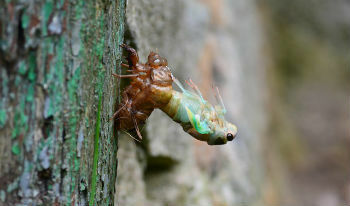Histology is a biomedical area that studies biological tissues. In biology, animal and plant tissues (animal and plant histology, respectively) are studied, analyzing their structure, origin and differentiation.
In the area of health, human histology makes it possible to diagnose various diseases based on comparative studies between healthy and diseased tissues.
Human Histology
The tissues of the human body are made up of similar cell types that have specific functions.

Histological Section of Human Skin
For example, on the skin, the outermost layer (epidermis) consists of epithelial tissue. The cells are flat on the surface and cubic more internally, protecting them from drying out and the entry of invaders.
Below the epidermis, the dermis is made up of dense connective tissue, rich in collagen fibers that provide flexibility.
Study Method
To study the tissues, very thin cuts are made, which undergo a fixation and coloring process. Dyes such as eosin, hematoxylin, methylene blue, among others, are used, which highlight cell structures.
Then the sections are placed on glass slides and taken to the microscope. A simple study of animal tissue is done under an optical microscope.
To perform diagnoses, for example, electron microscopy with more advanced techniques allows detecting changes in cells.
Types of Fabrics
The main types of tissue are the epithelial and connective tissue present in all animals. Vertebrates also possess muscle and nervous tissue.
epithelial tissue
It is a lining fabric formed by cells very close together and united, which act as a barrier against infectious agents and prevent water loss and dryness. In some structures its function is to secrete substances.
O epithelial tissue covers the external areas of the body and internally organs and cavities. The epithelium can be composed of a single layer of cells or several, which can be cubic or flat.
Connective tissue
It is a connecting fabric that acts in support and filling body structures, in addition to the transport of substances.
It can be classified according to the material and type of cells that compose it, whose functions are determined. Are they:
- Connective tissue itself (loose or dense): its extracellular matrix is abundant and rich in collagen, reticular and elastic fibers, in addition to molecules that act in the role of nourishing other tissues. Several types of cells are present, such as: fibroblasts, macrophages, lymphocytes, adipocytes, among others.
- Hematopoietic Tissue: also called hemocytopoietic, is responsible for the formation of blood cells and blood components. is present in the bone marrow, inside some bones.
- Cartilaginous tissue: composed especially of collagen fibers, this is the tissue that makes up the cartilages. Helps support and absorb impacts on bones.
- adipose tissue: consisting of adipocytes, this tissue acts as a thermal insulator and energy reserve.
- bone tissue: tissue rich in collagen fibers and minerals that make it rigid, acting to support the body.
Read too:
- Connective tissue
- Human Body Tissues
nerve tissue
It is the tissue responsible for communication between the different parts of the body, through the transmission of electrical impulses. The cells that conduct nerve impulses are the neurons.
Neurons have branches called dendrites that exit the cell body (where the nucleus and organelles are). They elongate through axons and communicate with other neurons or cells in other tissues.
Muscle tissue
It is a tissue specialized in contraction, thanks to the presence of myosin and actin proteins. Its cells are elongated forming fibers.
According to the shape and function of the cells that make it up, muscle tissue can be divided into: Smooth, Skeletal Striate and Cardiac Striate.
Also read about the myocardium.


